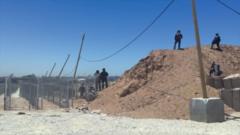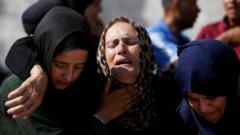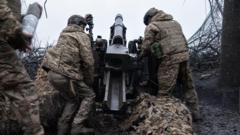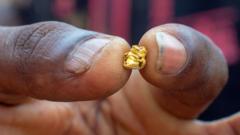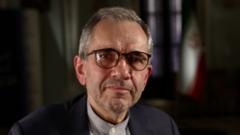As the search for a cease-fire between Israel and Hamas intensifies, the role of Izz al-Din al-Haddad, the newly appointed leader of Hamas in Gaza, will be pivotal. Al-Haddad assumed control of the military operations following the death of the previous leader, Muhammad Sinwar, during an Israeli strike, creating a shift in dynamics that could complicate negotiations.
Hamas' New Leadership and the Challenges of Cease-Fire Negotiations

Hamas' New Leadership and the Challenges of Cease-Fire Negotiations
Amid ongoing conflict, the emergence of Hamas' new leader Izz al-Din al-Haddad raises questions about future cease-fire prospects.
Al-Haddad, reportedly in his mid-50s, previously played a key role in orchestrating the October 7, 2023 attacks, further entrenching him within the militant framework of Hamas. With a history of opposing Israeli aims and a commitment to the group's red lines, he represents a potential hurdle to any plan that involves releasing hostages prior to achieving a total cessation of conflict and Israeli troop withdrawal from Gaza.
Experts suggest that the new leadership maintains the previous administration’s stance, indicating continuity in Hamas' hardline position. Brig. Gen. Effie Defrin of the Israeli military confirmed al-Haddad's leadership, acknowledging the significant implications this could have on ongoing negotiations. As the United States attempts to mediate a cease-fire, al-Haddad’s steadfastness could be a determining factor in whether peace efforts yield results or become mired in further conflict.
Experts suggest that the new leadership maintains the previous administration’s stance, indicating continuity in Hamas' hardline position. Brig. Gen. Effie Defrin of the Israeli military confirmed al-Haddad's leadership, acknowledging the significant implications this could have on ongoing negotiations. As the United States attempts to mediate a cease-fire, al-Haddad’s steadfastness could be a determining factor in whether peace efforts yield results or become mired in further conflict.



